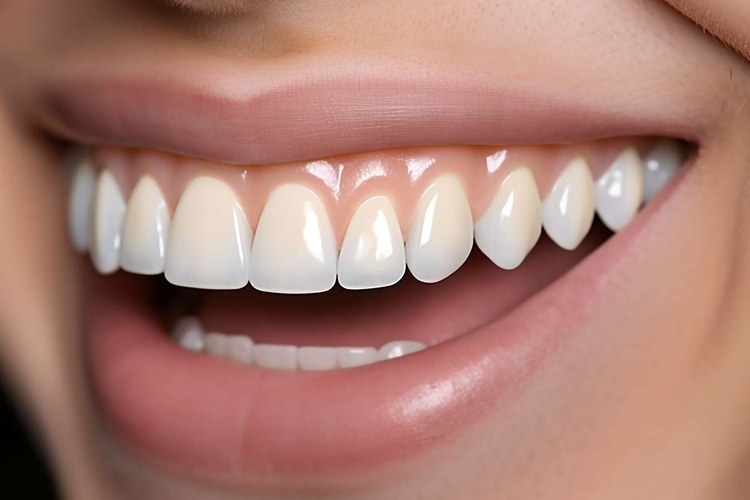Durable Solutions for Tooth Surface Improvement
Ceramic teeth coatings represent a significant advancement in dental aesthetics and restorative care, offering individuals a pathway to enhance the appearance and durability of their teeth. This approach involves applying a layer of ceramic material to the tooth surface, addressing various concerns from discoloration and minor damage to irregularities in shape and alignment. Understanding the process and benefits can help individuals make informed decisions about improving their smile.

Ceramic teeth coatings are a popular dental solution for those looking to improve their smile’s appearance and the functional durability of their teeth. These coatings, often referred to as dental veneers or dental bonding, utilize advanced materials to create a natural-looking and resilient surface over existing teeth. The applications range from correcting cosmetic imperfections to providing a protective layer against further wear and tear, contributing positively to overall oral health.
Understanding Ceramic Dental Enhancements
When considering tooth surface enhancement, ceramic materials play a crucial role in modern cosmetic dentistry. These materials are primarily used for dental veneers, which are thin, custom-made shells designed to cover the front surface of teeth, or in dental bonding, where a resin material is directly applied and sculpted. The goal is to achieve a brighter, more uniform smile, addressing issues such as stains, chips, gaps, or misalignments. The choice of material and technique depends on the specific aesthetic and restorative needs of the individual, guided by a dental professional.
The Procedure for Tooth Surface Improvement
The process of applying a ceramic tooth coating typically begins with a comprehensive dental examination and consultation. During this initial stage, the dentist assesses the patient’s oral health and discusses their desired smile aesthetics. For veneers, a small amount of enamel may be removed from the tooth surface to accommodate the thin ceramic shell. Impressions of the teeth are then taken and sent to a dental laboratory, where the custom veneers are fabricated. In the case of dental bonding, the composite resin material is applied directly to the tooth, molded into shape, and then hardened with a special light. Both procedures aim for a seamless integration with the natural teeth, enhancing the tooth’s appearance and overall durability.
Material Properties and Durability
The materials used for ceramic teeth coatings, primarily porcelain for veneers and composite resin for bonding, offer distinct properties that contribute to their effectiveness as a restoration. Porcelain veneers are renowned for their strength, stain resistance, and ability to mimic the light-reflecting properties of natural tooth enamel, providing exceptional aesthetic results. Composite resin, while not as durable as porcelain, is a versatile material that can be precisely matched to the natural tooth color and offers a more conservative and often less expensive option. Both materials are selected for their biocompatibility and their capacity to withstand the daily pressures of chewing, contributing to the long-term enhancement of oral health.
Benefits for Oral Health and Appearance
Beyond the evident cosmetic improvements, ceramic teeth coatings offer several benefits for oral health. By covering minor chips and cracks, they can protect the underlying tooth structure from further damage. They also provide a smoother tooth surface, which can sometimes make teeth easier to clean, potentially reducing the risk of plaque buildup and cavities. From an appearance standpoint, these treatments can dramatically transform a smile, correcting discoloration, improving tooth shape, and closing small gaps. The result is often a brighter, more uniform, and confident smile that contributes positively to an individual’s self-esteem and overall well-being.
Cost Considerations for Ceramic Teeth Coatings
The cost of ceramic teeth coatings can vary significantly based on the type of material, the complexity of the case, the number of teeth being treated, and geographic location. Porcelain veneers generally represent a higher investment due to the laboratory fabrication process and the material’s superior durability and aesthetic qualities. Dental bonding, utilizing composite resin, typically offers a more budget-friendly option. It is advisable to consult with a dental professional to receive a personalized estimate based on individual needs and treatment plans.
| Service | Typical Cost Range (USD) | Considerations |
|---|---|---|
| Porcelain Veneer (per tooth) | $925 - $2,500 | Custom-made, high durability, excellent aesthetics |
| Composite Bonding (per tooth) | $300 - $600 | Direct application, good aesthetics, less durable than porcelain |
Prices, rates, or cost estimates mentioned in this article are based on the latest available information but may change over time. Independent research is advised before making financial decisions.
In conclusion, ceramic teeth coatings offer a versatile and effective approach to improving both the appearance and structural integrity of teeth. Whether through porcelain veneers or composite bonding, these treatments provide durable solutions for a range of dental concerns, leading to enhanced aesthetics and a healthier, brighter smile. Consulting with a dental professional is the crucial first step in determining the most suitable treatment path for individual needs and goals.






